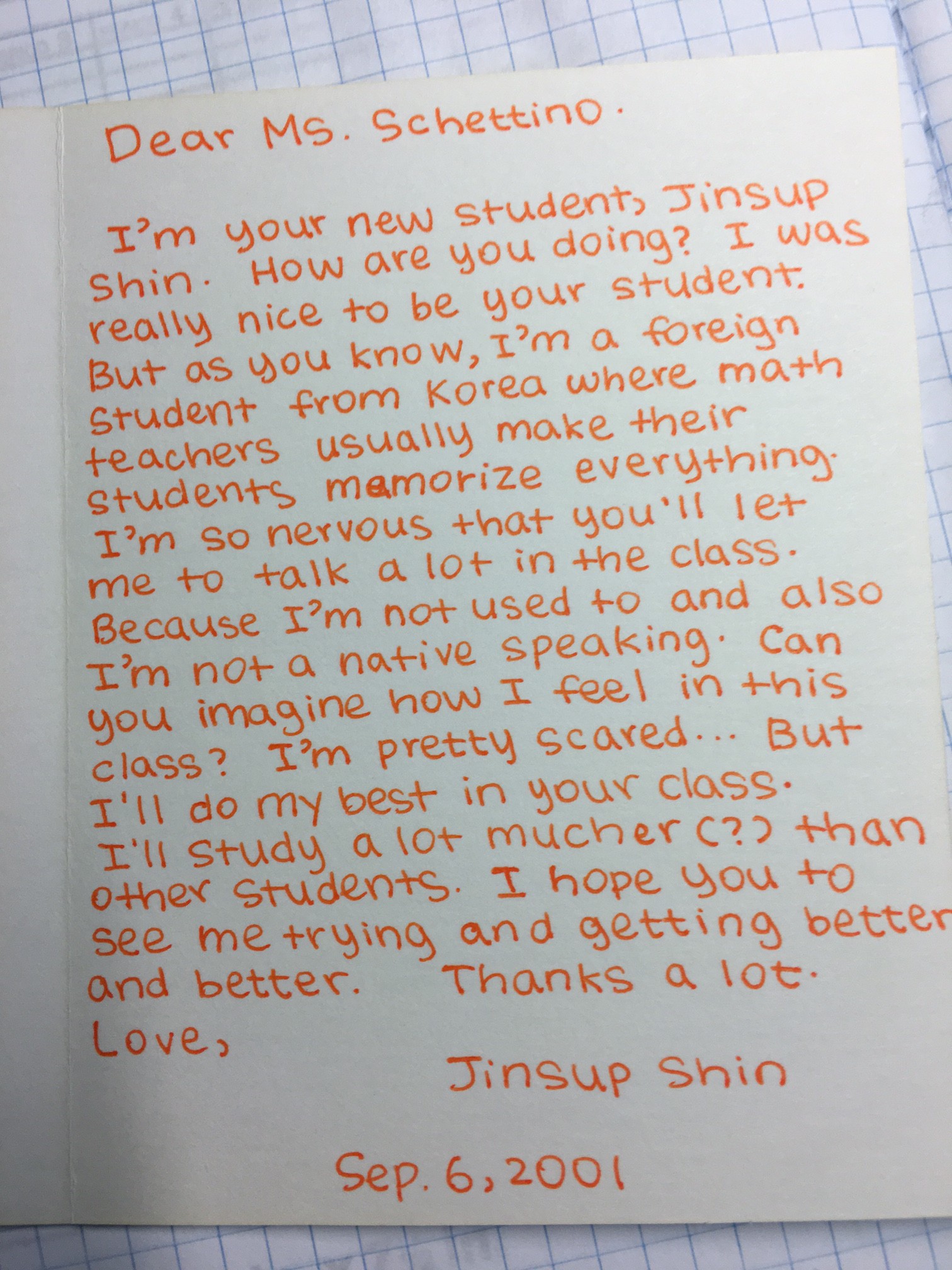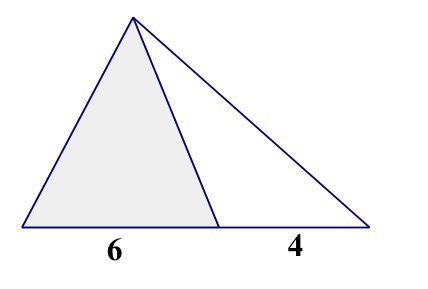As I am not going to be in the classroom next year, I have been going through some old boxes from my study and as many people who have been teaching for a long time have, I have boxes and bags full of cards from past students. I spent the afternoon one day going through these, reminiscing about so many great kids that I remember. One of them I had a card from the beginning of her freshman year and also one from the end of her senior year. Crazy!!
I don’t claim to be an expert in emergent English language learners and mathematics at all. I did have 10 years of teaching experience at a school (Emma Willard) where they had an ESL program and many students came into my mathematics classes who were not proficient in the English language. I do think those girls knew what they were getting themselves into and were up to the challenge, but some of them were very frightened.
Since she has now been out of college for a while, I would assume it’s ok for me to share this on my blog. Here is the card she gave me as a new student in 2001:

This card was written with the voice of a student who was used to a very structured, repetitive mathematics class and I believe she knew that coming into the U.S. things would be different, but possibly not as different as they were in my class. When she said, “I’m so nervous that you will let me to talk a lot in the class” I’m sure she was saying that she was nervous that I would expect her to contribute to the class discussion. What I did with many of those students, including Jinsup, was I focused in the beginning on letting them listen and write. I gave them lots of feedback on their journals and made sure they had the correct vocabulary and that their grammar in their writing made sense. I allowed them to ask more questions initially than to present their ideas until their confidence became stronger. Jinsup, as most Korean and Japanese students did, had excellent skills, as that was what their math education had focused on since elementary school. However, she was not very good at reasoning, sense-making or critical thinking on her own. It was almost as if she had not been asked to communicate about mathematics, as she was trying to say in her note to me.
However, she ended up doing very well in that first class and then I taught her again in precalculus (which we called Advanced Math) and then in BC Calculus her senior year. Her excellent background allowed her to focus on the reasoning aspects of all of these courses and in the end, I was very impressed with her growth. She really got the best of both worlds – the skills from her Asian mathematics education and the collaboration, communication and reasoning skills from the PBL here.
This is the note she wrote me at the end of her senior year:

Although I know this is only an anecdote and I don’t really have research evidence that PBL totally works with ELLs I do have confidence that with the right environment and patience, it is actually a great way of teaching for many of these second language learners. It allows them to find their voice in a language that is already new to them but at the same time have some practice in terminology that they may have heard before. I think this might be my next interesting research project – if anyone has some thoughts on this I’d love to hear them.



